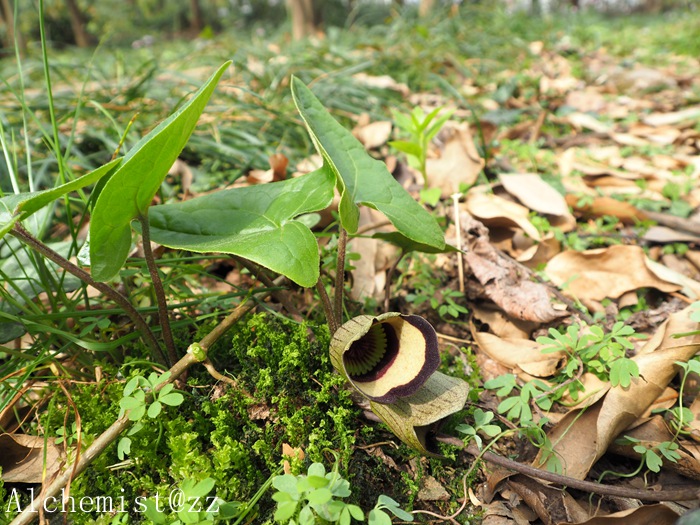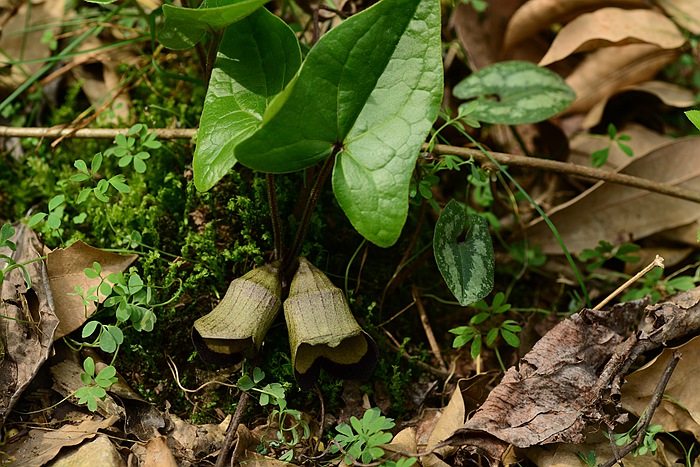九宫山细辛 Asarum campaniflorum
- Scientific Name: Asarum campaniflorum Yong Wang & Q.F.Wang
- Ref: Novon 14:239. 2004
- Chinese Common Name: 九宫山细辛 Jiǔgōng Shān xìxīn, 东方细辛 dōngfāng xìxīn
- Family: Aristolochiaceae
- Genus: Asarum
- Distribution: Bamboo bush on slope, yellow, sandy soil; 350-450 m. Hubei.
- Photo: 03/20/2016, Hangzhou Botanical Garden, Zhejiang
Perennial herb; rhizomes short, internodes 5-15 mm, with thick fleshy adventitious roots clustered at nodes. Leaves 2 or 3 on one branchlet, with petiole 10-30 cm, the cataphylls at its base ovate, to 2.5 cm, densely ciliate, shed when leaves fully grown; blade triangular or oblong-ovate, membranous, 7-20 X 5-14 cm, apex acute or acuminate, base auriculate, base of sinus 1-1.5 cm wide, sparsely pubescent above, with or without white blotches along midvein above, glabrous below, margins mucronate as extensions of secondary veins. Flowers solitary, facing downward, pale purplish green, large, ca. 3 cm across, 3.5 cm long. Peduncle 4-6 cm. Perianth tube campanulate, with lower portion broadly cylindrical, ca. 1.3 cm, ca. 1 cm in diam., internally pale yellow-green and with ca. 30 longitudinal smooth ribs, with upper portion abruptly swollen into a broad bell-shaped tube, ca. 1 cm, ca. 3 cm in diam., internally glabrous and pale yellow-green, not constricted, without orifice, connecting part flat, internally dark purple, having smooth longitudinal ribs continuous with those on internal tube surface of lower portion. Perianth lobes broadly triangular-ovate, ca. 1 X 2.5 cm, nearly erect, having a dark purplish crescent toward middle, triangular, pale yellow-green beneath and continuous with internal tube surface. Stamens 12; filaments very short; anthers ca. 4 mm, with connective obtuse. Ovary half-inferior; styles 6, ca. 7 mm, with bifid apices; stigma oblong-ovoid, inserted in apex notch; ovary subglobose, ca. 1.5 cm, ca. 1.7 cm in diam. Seeds ovoid, dark brown, concave on one side, protruding on opposite side, ca. 4 mm, ca. 2.5 mm wide. 2n = 26. (Flora of China)

03/20/2016, Hangzhou Botanical Garden
